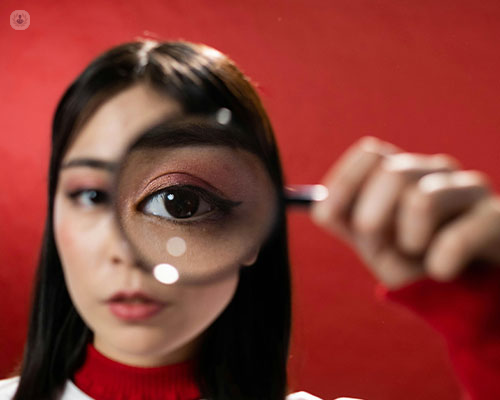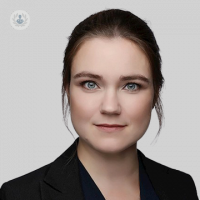Don't be shortsighted about the risks of myopia
Escrito por:Myopia, also known as short-sightedness, is an extremely common vision condition where you cannot see objects that are farther away clearly, but can see things that are up close. Things in the distance will look blurry, with lines becoming indistinct. Activities like driving, watching movies and television, and reading become difficult and strenuous. Myopia can be a mild hindrance at best, especially for those at work or in school, but there are also serious complications that can arise if it is left unaddressed and destabilising. In this article, an accomplished vitreoretinal surgeon warns of the possible risks of myopia.

What is myopia and what causes it?
Myopia affects an estimated half of the UK population, and there are many possible causes: health conditions, eye structure, childhood development, and inherited genes. You can be born with myopia, or it can occur later in life. Those with myopia may suffer from eyestrain and headaches, and may even adopt bad posture as they hunch forward to get closer to whatever they are trying to see. It can be corrected with removable seeing aids, either glasses or contact lenses, or with more permanent procedures such as laser eye surgery or intraocular lens replacement.
Myopia happens when the shape of the eye is more like an ovoid than spherical, causing the light that enters the eye to become warped and refracted, and it does not interact correctly with the retina, which converts light into electric signals for the brain.
There are degrees to myopia, measured in a scale called dioptres (dpt) which refers to the level of correction needed to see without distortion.
- Low-grade myopia is between -0.50 and -3.00 dpt.
- Moderate myopia is between -3.00 and -6.00 dpt.
- High myopia is -6.00 dpt or more.
What are the risks of myopia?
Myopia, at a low grade, is generally harmless and ubiquitous, but it is not necessarily stable and vision can worsen over time.
People who have higher grades of myopia are at risk of:
- Pigment dispersion syndrome, where the pigment of the iris floats around in other parts of the eye, and can lead to pigmentary glaucoma.
- Glaucoma, where intraocular pressure increases and can lead to blindness and severe pain.
- Floaters, which are small dark dots or squiggly lines that appear in the vision
- Retinal detachment, where the retina detaches from the back of the eye and vision rapidly deteriorates, and can accumulate in permanent blindness without immediate treatment. A symptom of this is the sudden appearance of floaters in the vision that increase in intensity.
- Cataracts, a condition mostly related to ageing and where the lens of the eye becomes cloudy, causing blurry vision, regardless of distance and cannot be corrected with seeing aids, and can result in eventual blindness
- Macular degeneration (maculopathy), where there is blindness in the centre of the vision due to a deterioration of the macula that focuses the light to give detail to what we see.
- Legal blindness, where the myopia continues to worsen to the point that glasses or contacts cannot correct the vision to at least 3/60 vision (this means that what other people can see clearly at 60 metres away, you can only see clearly at 3 metres away).
Children who are born with myopia (congenital myopia) or develop it a little later on (youth onset and school myopias) are at risk of developing a lazy eye or a squint as the body tries to compensate for weak vision.
How can myopia be treated?
The most widespread treatment for myopia is getting glasses or contacts that can correct the vision so that regular activities are no longer difficult to perform. Surgeries to correct the refraction are also available, but may not be a suitable option for everyone due to cost, possible complications of surgery, and eyes that are still changing and shifting in structure, such as in children.
Spending more time outdoors, especially for children whose eyes are still developing, can help prevent the worsening of myopia thanks to exposure to sunlight and visual stimulation at various distances which can strengthen the eyes.
Avoid reading or using devices with screens in low light or the dark to prevent eyestrain, and hold devices and books as far away from the face as possible.
Monitor the condition of the vision and ensure it is not worsening by attending regular checkups with the optometrist or opthamologist.
If you believe you may have myopia, or are struggling with vision issues, book an appointment with a specialist via Top Doctors.


